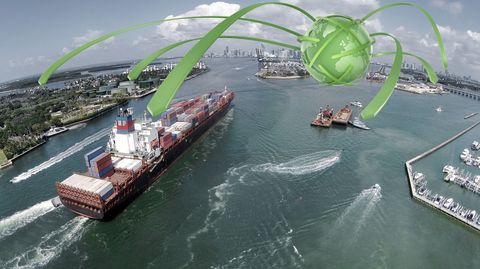Businesses involved in international trade will typically pay close attention to current and near-term developments in the global market in order to form their strategies, but the most forward-thinking organisations will go a step further and consider the market's long-term evolution on a macroeconomic scale.
In the last few years, the prevailing economic picture has been characterised by caution, with the gloom of the 2008 global downturn followed by only a tentative recovery, and the most recent international figures suggesting that the pace of growth is currently slowing down.
However, a longer-term report from HSBC and Oxford Economics has indicated that a substantial turnaround is to be expected over the next few decades, with the prediction that the world of international trade is on the cusp of a "third phase of globalisation".
According to the research, this wave of change has the potential to create numerous opportunities for financial growth and improve the lives of millions of people worldwide - but much will depend on the ability of businesses to foresee and adapt to the market evolution as it happens.
Key trends
The report, entitled 'Trade Winds: shaping the future of international business', examines key trade and business trends of the past 150 years to predict the development of international trading between now and 2050.
It predicts that total worldwide goods exports will reach $68.5 trillion (£45.44 trillion) by 2050, which would represent a fourfold increase in the value of global exports compared to 2015's figures, and more than 150 times the amount traded in 1950.
Asia is expected to be one of the biggest beneficiaries of these changes, with the region’s share of global exports expected to reach 46 per cent in 2050, compared with 33 per cent in 2015. China is predicted to extend its lead as the world's top exporter, with India becoming an increasingly influential power; Western Europe and North America, meanwhile, will see their shares of the overall global exports market decline, but will be larger than today in absolute terms.
A new business environment
These seismic changes are expected to be driven by continued industrialisation, a sharp drop in transport and communication costs and changes in trade policy that will open up new markets, as the cost of trade progressively falls.
Advances in technology will be key to this transformation, facilitating the development of new products and business models. For example, the adoption of 3D printing by the mainstream will facilitate customisable built-to-order production, while the rise of smart technologies will mean devices can interact with each other seamlessly, unlocking efficiencies in logistics and business management as well as product design.
It is also expected that the focus of trade will shift from products to services, with the recent digital evolution in the distribution of films, books and music likely to be mirrored in other sectors.
As a results of these changes, it is likely to be important for businesses to amend the way they operate accordingly, lest they run the risk of being left behind by a rapidly-evolving market. The HSBC report pointed to the fact that many companies operate with a great deal of wastefulness in their production cycles, noting that this is likely to change as more elements of supply chain management and logistics become trackable.
The report explained: "This third wave of globalisation will take millions of people out of poverty, raise income levels and improve quality of life. Emerging economies will increasingly catch up with mature economies as economic prosperity is spread more evenly.
"For businesses there will be new opportunities - these include new ways of working, new business models and new skills requirements. Physical borders will become less important, and how we define trade will change."






